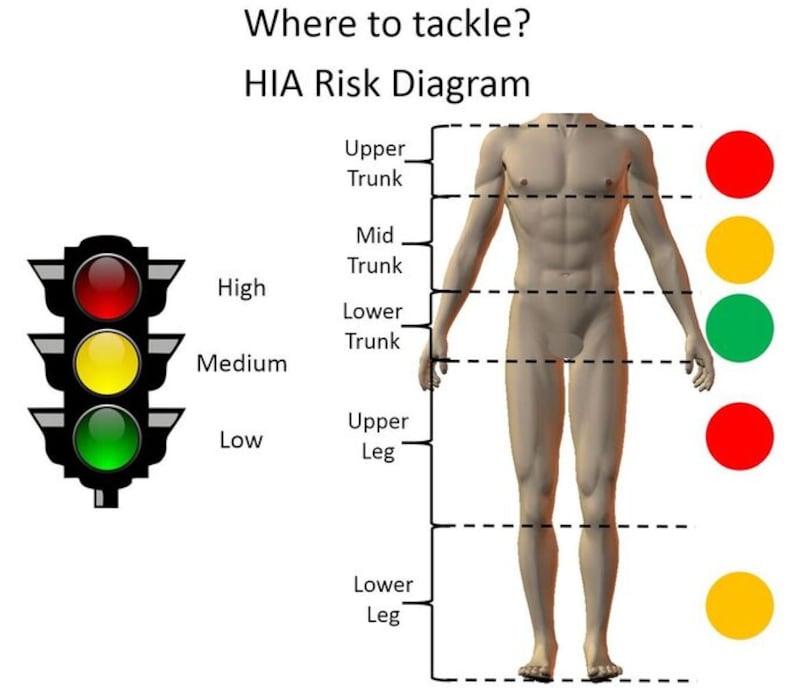Rugby players are at a higher risk of suffering head injuries when making – rather than receiving – tackles, according to researchers at Trinity College, Dublin.
Bioengineers at the college have compiled a set of recommendations that they believe could significantly reduce concussions and other head injuries in the sport.
Among their main findings is that tackles made to the lower trunk of the ball carrier’s body (roughly around the pelvis) – as opposed to the upper trunk (chest and shoulders) or upper legs (thighs and knees) – lead to reduced risk of tacklers requiring a head injury assessment (HIA) for potential concussion during which they have to leave the pitch to be medically examined.
The recommendations follow the researchers’ assessment of how head impacts and movement vary based on the position of the body when tackles are made. They used 3D motion analysis lab trials with professional rugby players and model-based image-matching techniques to examine the effect of tackles made at different points on the body.
They measured resultant head movement, notably head rotation due to mild trauma brain injury, and compared these with concussion injury indicators to draw up recommendations.
Their results are published in the Journal of Science and Medicine in Sport and the Journal of Biomechanics.
Physiotherapy experts
The work, funded by the Irish Research Council, was conducted over four years by Associate Professor Ciaran Simms, and PhD researcher Gregory Tierney from Trinity's School of Engineering and Centre for Bioengineering. Physiotherapy experts employed by Leinster Rugby assisted in the research.

Head injury prevention strategies should place emphasis on tackling lower-risk body regions such as the lower trunk, as nearly four out of five (77 per cent) tackler HIAs are caused by tackles to the upper trunk (47 per cent) and upper legs (30 per cent), they suggest.
Specific tackler recommendations include making contact at the lower trunk; taking shorter, faster steps when approaching the ball carrier; avoiding planting feet; keeping the head up and facing the ball carrier; not looking at the ground; and placing the head on the correct side of the ball carrier.
The bioengineers found high-impact tackles to the upper trunk (with no head contact) can cause ball carrier head motion similar to that reported for concussion injuries, but tackling the mid/lower body trunk could reduce this by around 50 per cent. This was shown by computer modelling and motion analysis in laboratory trials.
“The physical and high-impact nature of rugby union has made head injuries and long-term brain health a concern, and the 2016-17 English Premiership rugby union season was the sixth consecutive one in which concussion was the most commonly reported match injury – contributing to 22 per cent of all match injuries during that season,” Prof Simms said.
Prevention strategies
“Our findings have helped us better understand the mechanisms of head impacts in rugby union and resulted in these recommendations, which we hope may guide prevention strategies and reduce head injury assessment risks for athletes.”
The findings have been submitted to World Rugby, which oversees the game globally, and to the Irish Rugby Football Union. Some of their findings are broadly similar to video analysis commissioned by World Rugby.
Prof Simms said “science is one thing” but the implementation of changes is another and that he expected the response of rugby authorities would “evolve from here”.
Mr Tierney said the findings “provide an evidence base, at the elite level, for coaches to develop and implement technical-based concussion prevention strategies for players”.
“Our focus was to ensure the findings had a practical relevance on the field,” he said. “Tackling at the upper trunk of the ball carrier should be discouraged. Instead, coaching strategies should place emphasis on tackling at lower head injury assessment risk body regions such as the lower trunk.”















